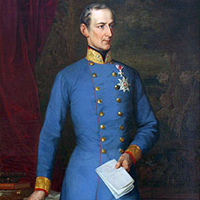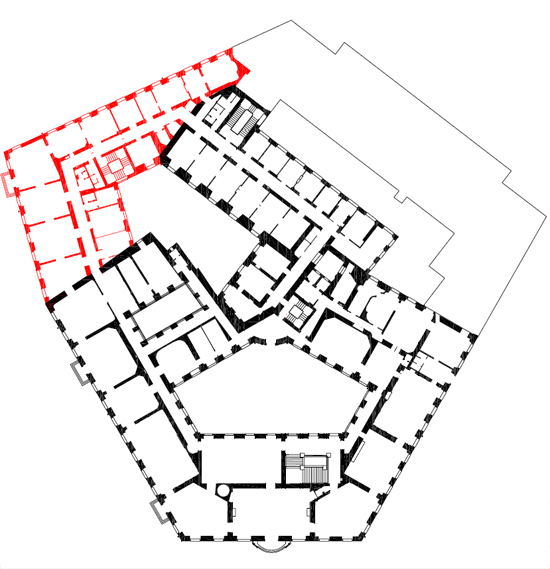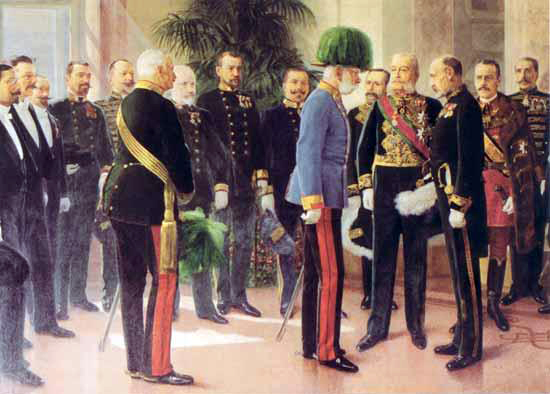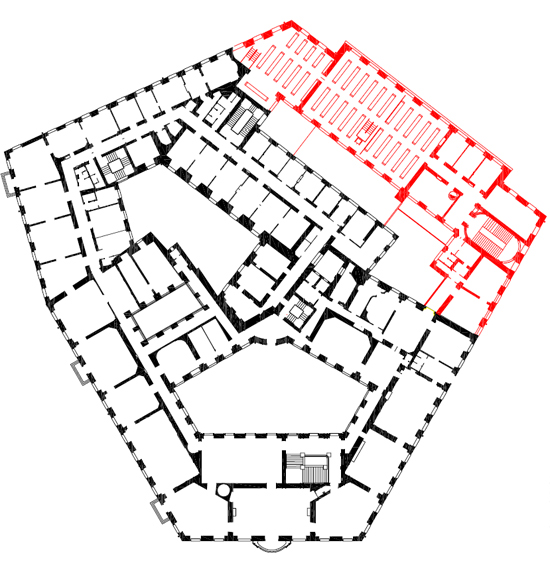Austria-Hungary

After the bloody upheavals of the 1848 revolution Prince Felix Schwarzenberg (1800–1852) took office at the Ballhausplatz. In the Schwarzenberg era, the position of foreign minister was strengthened both internally and externally. Henceforth "the Ballhausplatz" was the central ministry of the Monarchy.
Between 1850 and 1900 the population of Vienna more than tripled. The city experienced its most extensive period of expansion and reconstruction. The city walls were razed, the Ringstrasse built and the construction boom of this "Gründerzeit" created magnificent palaces, but also miserable tenements in the suburbs.
This development is also reflected in the Federal Chancellery. In 1881 another extension, this time reaching all the way to the Metastasiogasse, was added on the former monastery land that had been taken into state ownership by Joseph II. This provided office space for the growing business of the Imperial and Royal Ministry of Foreign Affairs.

Following the demolition of the last remnants of the Minorite Monastery and the Hofspital, the final additional wing designed by Otto Hofer was added in 1900. This wing housed the State Archives and boasts a technically advanced cast-iron structure for the storage floors.


